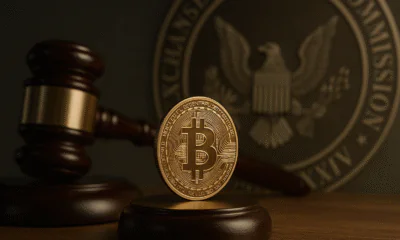Regulation
Feedback on Digital Assets Provided by Authority Figures

While there have been many positive developments surrounding the adoption of digital assets in 2021, there still remain many detractors in positions of power. Moving forward, the industry must work hard to sway those who remain unconvinced of the merits of digital assets. For the time being, individuals from the Federal Reserve, SEC, and Bank of Korea have each shared fresh feedback.
Vehicles for Speculation
One example of a negative opinion that holds major sway within the United States is that of Jerome Powell – Chairman of the United States Federal Reserve. In a recent interview, Powell spoke of digital assets as ‘vehicles for speculation’ which are ‘not really being actively used as payments’. This stance is not a new one for Powell, but rather reiterated his previously established viewpoint.
Although some may not want to accept this viewpoint, there remains a level of truth to it, despite recent strides made in the industry. As it stands, cryptocurrencies are not commonly used a means of payment. Yes, there have been various announcements from companies such as Visa and Mastercard which indicate this will change – however, these are forward looking statements, and not a reflection of the sector as it stands. Until these announced developments actually go live, viewpoints such as the one shared by Powell will remain commonplace.
No Intrinsic Value
Digital assets are especially intriguing because of their ability to affect change on a global scale. As such, it is not just the United States coming to terms with how to deal with them, but countries such as South Korea as well. In another recent interview, Lee Ju-Yeol, Governor of the Bank of Korea, echoed the aforementioned sentiment shared by Jerome Powell. Building upon this viewpoint, Lee Ju-Yeol referenced a commonly parroted issue that governments seem to have with digital assets – a ‘lack of intrinsic value’.
The issue with this particular argument, is that intrinsic value is highly subjective. Powell’s stance that digital assets aren’t used for payments is a simple one – they either are, or the are not. The argument surrounding intrinsic value is not as easy to stand upon.
A few months ago, popular digital asset exchange (and now federally chartered bank) Kraken, took the time to highlight the intrinsic value of Bitcoin. At the time, Kraken noted the following as areas which investors believe the value of digital assets such as Bitcoin lay.
- Immutability
- Decentralized
- Scarcity
- Utility
- Cryptographically Secure
- Uncorrelated Assets
The point being that intrinsic value is not solely derived by underlying assets, but from whatever trait the end user values.
Safe Harbour 2.0
Digital assets come in many shapes and forms – whether this be an NFT, cryptocurrency, or even a digital security. Making this fact more confusing, is that digital assets can often evolve from one asset class to another. This trait makes regulation of such assets difficult, as a token may begin its life as a security, and soon morph in to a utility token. With this being the case, how should regulators approach the situation?
Recognized this issue, SEC Commissioner Hester Peirce has in the past put forth the ‘Token Safe Harbour Proposal’. On the most basic level, this proposal would see companies granted a grace-period, in which they would be exempt from certain securities laws while they first establish operations. During this period a company may work to establish sufficient decentralization of a released token for it to no longer be viewed as a security. One the grace-period lapses, the tokens will be re-evaluated, and will either be deemed sufficiently decentralized, or must be registered as a security with the SEC.
After a period of time in which Peirce listened to feedback, a version 2.0 of the Safe Harbour Proposal has now been released. In it, Peirce highlights 3 main changes which would affect companies taking part.
- Semi-annual updates to the plan of development disclosure and a block explorer.
- Required exit report by outside counsel upon completion of 3 years grace period.
- Outside counsel provided with template on points to be addressed in exit report analysis.
Much like the first iteration of the Safe Harbour Proposal, this version 2.0 has been uploaded to GitHub for further community feedback.
Peirce states that, “The updated version reflects constructive feedback provided by the crypto community, securities lawyers, and members of the public…There is, however, more work to be done, which is why I, as a believer in the value of drawing on decentralized knowledge, posted the safe harbor on GitHub.”
Gensler Officially Appointed
A poorly kept secret over the past few months, was the pending confirmation of Gary Gensler as the new Chairman of the SEC – a move which has just been confirmed by the U.S. Senate. This move sees the influential regulator now headed by an individual with extensive experience surrounding digital assets.
With a background boasting short stints in teaching blockchain and digital currencies as MIT, along with various testimonies providing feedback on the technology in front of Congress, Gensler would appear to be well suited towards a future in which digital assets are commonplace. Understanding does not necessarily equate to acceptance however, and it should be interesting to see how the stance of the SEC towards digital assets evolves under his watch.












